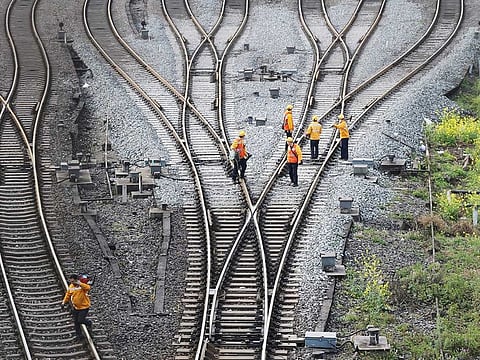Gulf does the right thing being a part of Belt and Road initiative
US opposition to China’s ambitious infrastructure and trade project is outdated

With the inauguration of China’s “The Belt and Road” initiative, simmering disputes over the dominance of trade routes will completely change. In the past, the bigger countries used to control trade routes by using force to take over strategic waterways and ports, including the Cape of Good Hope, which connects Europe with the East.
The British Empire had the lion’s share of this hegemony.
Again, and particularly after the Second World War, the rules of the game changed and the new superpowers, the US and the Soviet Union, aligned with countries that had major trade routes run through them. However, by the 21st Century, which saw the remarkable development of the Chinese economy, military force or political polarisation are no longer effective to dominate trade ways.
Instead, the strength of individual economies and massive investments in infrastructure projects related to trade are the determinants in establishing a prominent role for each country and in the management of trade and transportation lines.
This highlights the importance of the Belt and Road, for which various governments have allocated more than $2 trillion (Dh7.35 trillion) to connect continents, similar to what the ancient Silk Road did in its times. Countries’ positions have varied over China’s approach, although all necessary arrangements are being put in place whatever be the odds.
It is no surprise that some countries have joined the China project and expressed their willingness to open their ports to Chinese-led investments. Western European countries announced they are ready to contribute in spite of stiff US disagreement.
The German Chancellor Angela Merkel described the China plan as a major project that Europeans want to take part in. The positions of France and Italy are also similar to Germany’s stance.
In addition, Russia as well as dozens of Asian and African countries too have expressed their willingness to participate. Chen Yuan, governor of China Development Bank, said at the Boao Forum for Asia last month that the bank has provided $190 billion in funding for more than 600 projects under the Belt and Road plan since 2013, accounting for 34 per cent of the bank’s total global activity. This reflects the importance China attaches to the project.
The UAE, Saudi Arabia and Kuwait have made sound and important decisions by announcing their participation as well, especially as they occupy a strategic location in the crossroads of future movements. This will turn them into a key player in this project.
The US opposition remains questionable, as it comes within the framework of its competition with China, whose economy is ranked the world’s second largest and expected to top the US by the fourth decade of this century.
The US is opposing without offering an alternative at a time when most countries are keen not to miss such an important business opportunity. This means Washington has one of two options, either isolation, which would cost it a lot and stoke the fires of trade conflicts, or join the Chinese project, which would enhance cooperation and open up new and profitable prospects ... but this time led by the Chinese dragon.
Sign up for the Daily Briefing
Get the latest news and updates straight to your inbox

